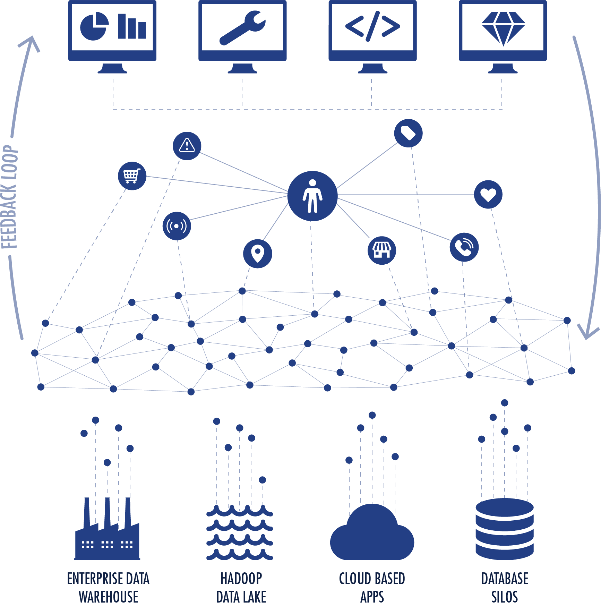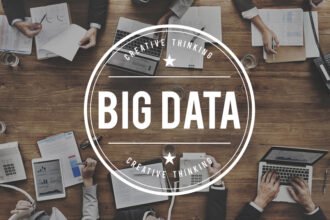In order to thrive in the current economic environment, businesses need to provide exceptional customer service. To do so, they must be able to rapidly understand and react to customer shopping behaviors. To properly interpret and react to customer behaviors, businesses need a complete, single view of their customers. What does that mean? A Single View of the Customer (SVC) allows a business to analyze and visualize all the relevant information surrounding their customers, such as transactions, products, demographics, marketing, discounting, etc. Unfortunately, the IT systems that are typically found in mid- to large-scale companies have separated much of the relevant customer data into individual systems. Marketing information, transaction data, website analytics, customer profiles, shipping information, product information, etc. are often kept in different data repositories. This makes the implementation of SVC potentially challenging. First, let?s examine two scenarios where a company?s ability to fuse these external sources into an SVC can provide tremendous value. Afterwards, we will talk about strategies for implementing an SVC.
Call Center
Customer satisfaction has a major impact on the bottom line of any business. One study found that 78 percent of customers have failed to complete a transaction because of poor customer service. A company?s call center is a key part of maintaining customer satisfaction. Customers interacting with the call center typically do so because there is already a problem ? a missing order, a damaged or incorrect product. It is critical that the call center employee can resolve the problem as quickly as possible. Unfortunately, due to the typical IT infrastructure we discussed above, the customer service representative often faces a significant challenge. For example, in order to locate the customer?s order, access shipping information and the potential to find a replacement product to ship, the customer service representative may have to log in to three or more different systems (often, the number is significantly higher). Every login to a new system increases the time the customer has to wait, decreasing their satisfaction, and every additional system is a potential point of failure.
Sales Performance
Naturally, in order to maximize revenue, it is critical to understand numerous key metrics including, but not limited to:
- What products are/are not doing well?
- What products are being purchased by your key customer demographic groups?
- What items are being purchased together (basket analysis)?
- Are there stores with inventory problems (overstocked/understocked)?
Once again, the plethora of data storage systems makes for a challenge. To gather the data required to perform the necessary analytics, numerous systems will have to be queried. As with the call center scenario, this is often performed manually, via ?swivel-chair integration.? What this means is that an analyst will have to manually login to each system, execute a query to get the necessary data, store that data in a temporary location (often in Microsoft Excel?), and then repeat that process for each independent data store. Finally, once the data is gathered the process of performing the actual analysis can begin. The process of gathering the necessary data often takes longer than the actual analysis. Even in mid-sized companies this process can involve numerous people to get the analysis done as quickly as possible. Still, the manual nature of this process means that it is not only expensive to perform (in terms of resources), but it occurs at a much slower pace than ideal to rapidly make business decisions. The fact that performing even the most basic and critical analytics is expensive and time consuming often prevents companies from taking the next steps, even though those steps could provide a significant boost to sales. One of those potential next steps is moving the full picture of the customer directly into the stores. When sales associates can immediately access customer information, they are able to provide a more personalized customer experience, which is likely to increase customer satisfaction and average dollars per sale. Another opportunity where the company can see tremendous sales impact is in moving from reactive analytics to predictive analytics. When a company runs traditional retail metrics ? as previously described ? they are typically either done as part of a regular reporting cycle or in response to an event, such as a sale, in order to understand the impact of that event on the business. While no one is likely to dispute the value of those analytics, the fact is that the company is now merely reacting to events that have already happened. We can try to use some sort of advanced analytic methods to predict how our customers may behave in the future based on their past actions, but as we so often hear from financial analysts, past performance is not indicative of future results. However, if we can take our SVC, that links together all of their past actions, and tie in information about what the customer intends to do in the future (like Prosper Insight & Analytics), we now have a roadmap of customer intent that we can use to make key business decisions.
Creating a Single View of Customer
To be effective, an implementation of SVC must be driven from a unified data fabric. Attempting to create an SVC by directly connecting the application to each of the necessary data sources will be extremely time consuming and will prove highly challenging to implement. A data fabric can seamlessly connect the necessary data to provide an operational analytic environment upon which to base the single view of customer as shown in Figure 1 – Data Fabric. The data fabric driving the single view of customer should meet the following requirements:
- It must connect all the relevant data from the existing data sources in a single data store. This provides the ability to perform the complex analytics across all the linked information.
- It needs to be easily modified to support new data. As the business grows and evolves, learning to leverage its new SVC, additional data sources will typically be identified as being helpful. These should be easy to integrate into the system.
- The initial implementation must be rapid. Ideally, a no-code solution should be implemented. Companies rarely have the resources to support expensive, multi-month IT efforts.
- It should not disrupt existing systems. The data fabric should provide an augmented data layer that supports the complex analytic queries required by the single view of customer without disrupting the day to day functionality of the existing data stores or applications.

Conclusion
A well-built SVC can have a significant, positive impact on a company?s bottom line. Customer satisfaction can be increased. Analysis can move from being reactive to being predictive of customer behavior. This effort will likely require that a data fabric be developed to support the application, but new technologies now make it possible to rapidly create that fabric using no-code solutions, thereby making feasible the deployment of a Single View of the Customer.











